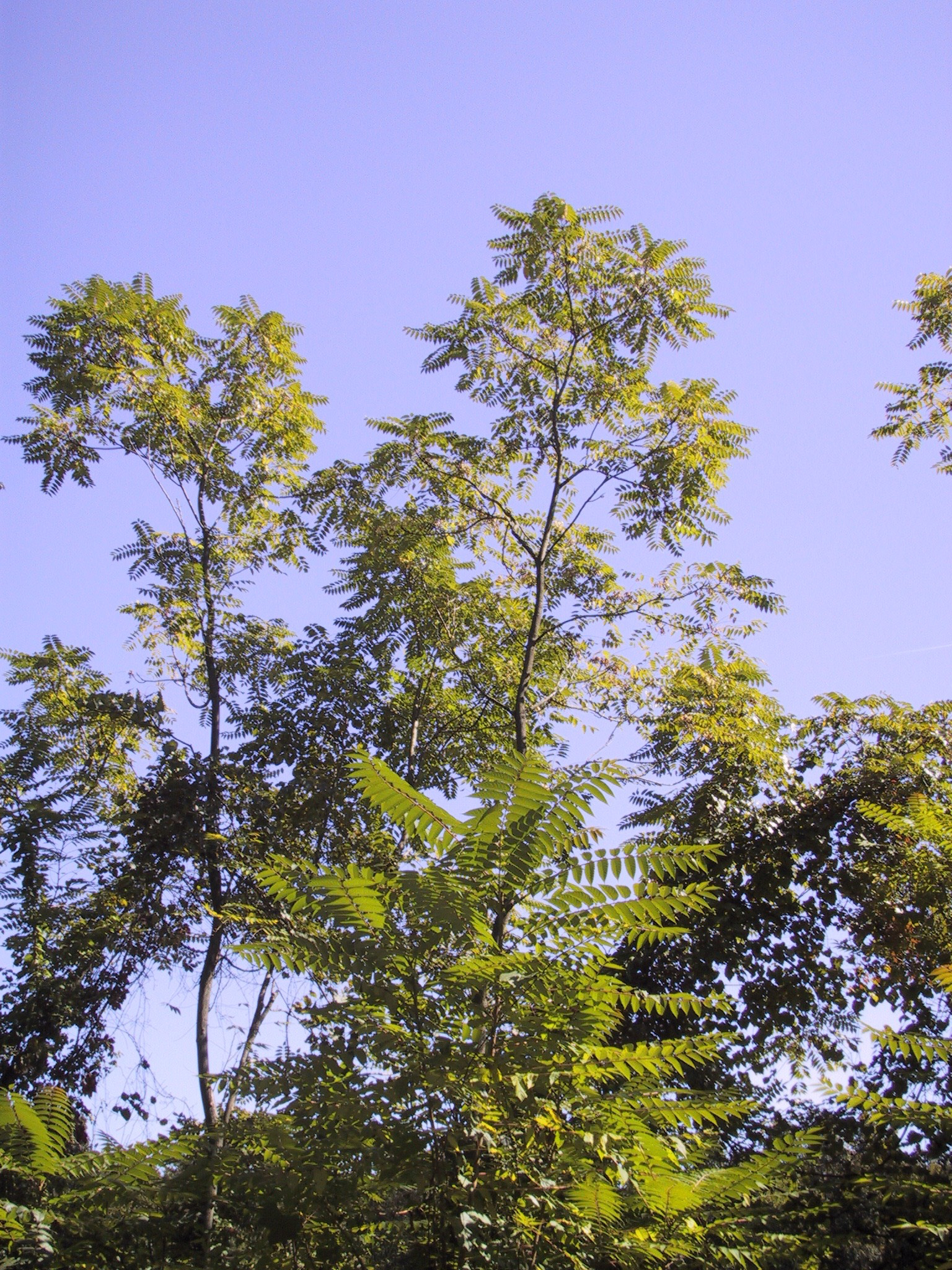Crow’s Nest: Ailanthus and spotted lanternfly
By Daniel Barringer, Preserve Manager.
I’ve long been accustomed to telling people that we don’t have any tree-of-heaven (Ailanthus altissima) here at Crow’s Nest Preserve. We didn’t have much to begin with 25 years ago and long since had removed what was here. Ailanthus is an extremely invasive tree that can show up any time, however, and we’ve had to address it occasionally over the years as it seeded in to the preserve, but never had to deal with large trees.
This changed in 2020 as we added more acreage to the preserve which included an established grove of the trees. I photographed the canopy of this grove in the year 2000, long before these acres were a twinkle in our eye…

Now that this land is under our stewardship we are removing this invasive species from the site. Since ailanthus re-sprouts vigorously if it is cut, first I treated the stems with a basal bark herbicide. Now that the trees are dead I’m starting to cut them down. Ailanthus is also the preferred host of spotted lanternfly (Lycorma delicatula), an introduced invasive insect which has been spreading through Pennsylvania—see our comments about this species in 2019 here, in 2018 here, and 2017 here.
First I checked with researchers from Penn State who are doing research on spotted lanternfly here—but they didn’t need these trees for their research and I wanted the invasive trees, and the insects they support, gone. Not only is tree-of-heaven invasive and the preferred host of an invasive insect, but they are also covered in invasive vines at this location, including Oriental bittersweet (Celastrus orbiculatus).

Even though these ailanthus trees were already dead, they were covered in early instars of spotted lanternfly—perhaps because lanternfly also seems to feed on the Oriental bittersweet. Above, third and fourth instars of lanternfly photographed last week on the dead ailanthus. Below, a fourth instar on the stump of an ailanthus I cut down.

By ring count, this tree was in its thirties. I like to count the rings of the trees I cut down as a way of acknowledging their life, even if it is an invasive species I’d rather not have on the preserve. So this tree was here before I started here in 1996. And yes, I am aware of the irony of following a Field Notes post about a tree planting with one about cutting trees down. Our management objectives are well thought out and I think there is a place for both.
The trees in this grove had grown to a considerable size, and so cutting them down required a little bit of precision logging technique, especially since they were not far from the utility wires along Bethesda Road. I am grateful to the late Soren Eriksson for the Game of Logging training that most of our staff has had. I’d like to think he would be proud of the face cut, plunge cut, hinge, and back cut—but I don’t know, he was a perfectionist! And I don’t doubt that he loved the trees as much as he loved people, even as he taught us to cut them down safely.
